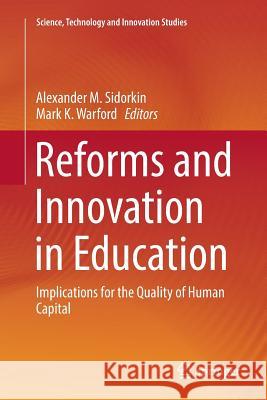Reforms and Innovation in Education: Implications for the Quality of Human Capital » książka
topmenu
Reforms and Innovation in Education: Implications for the Quality of Human Capital
ISBN-13: 9783319868165 / Angielski / Miękka / 2018 / 142 str.
Reforms and Innovation in Education: Implications for the Quality of Human Capital
ISBN-13: 9783319868165 / Angielski / Miękka / 2018 / 142 str.
cena 564,88
(netto: 537,98 VAT: 5%)
Najniższa cena z 30 dni: 539,74
(netto: 537,98 VAT: 5%)
Najniższa cena z 30 dni: 539,74
Termin realizacji zamówienia:
ok. 22 dni roboczych
Bez gwarancji dostawy przed świętami
ok. 22 dni roboczych
Bez gwarancji dostawy przed świętami
Darmowa dostawa!
Kategorie:
Kategorie BISAC:
Wydawca:
Springer
Seria wydawnicza:
Język:
Angielski
ISBN-13:
9783319868165
Rok wydania:
2018
Wydanie:
Softcover Repri
Ilość stron:
142
Waga:
0.22 kg
Wymiary:
22.96 x 15.57 x 0.84
Oprawa:
Miękka
Wolumenów:
01
Dodatkowe informacje:
Wydanie ilustrowane











